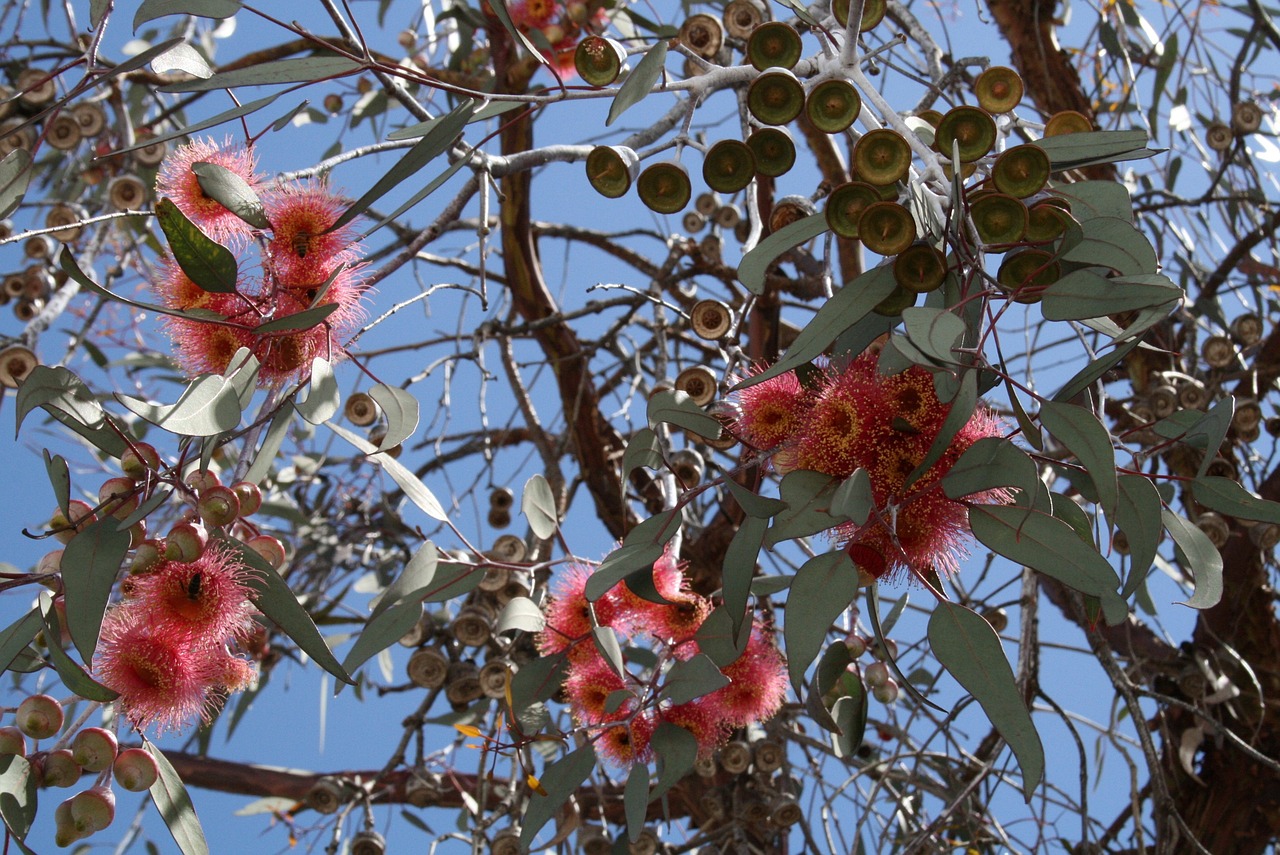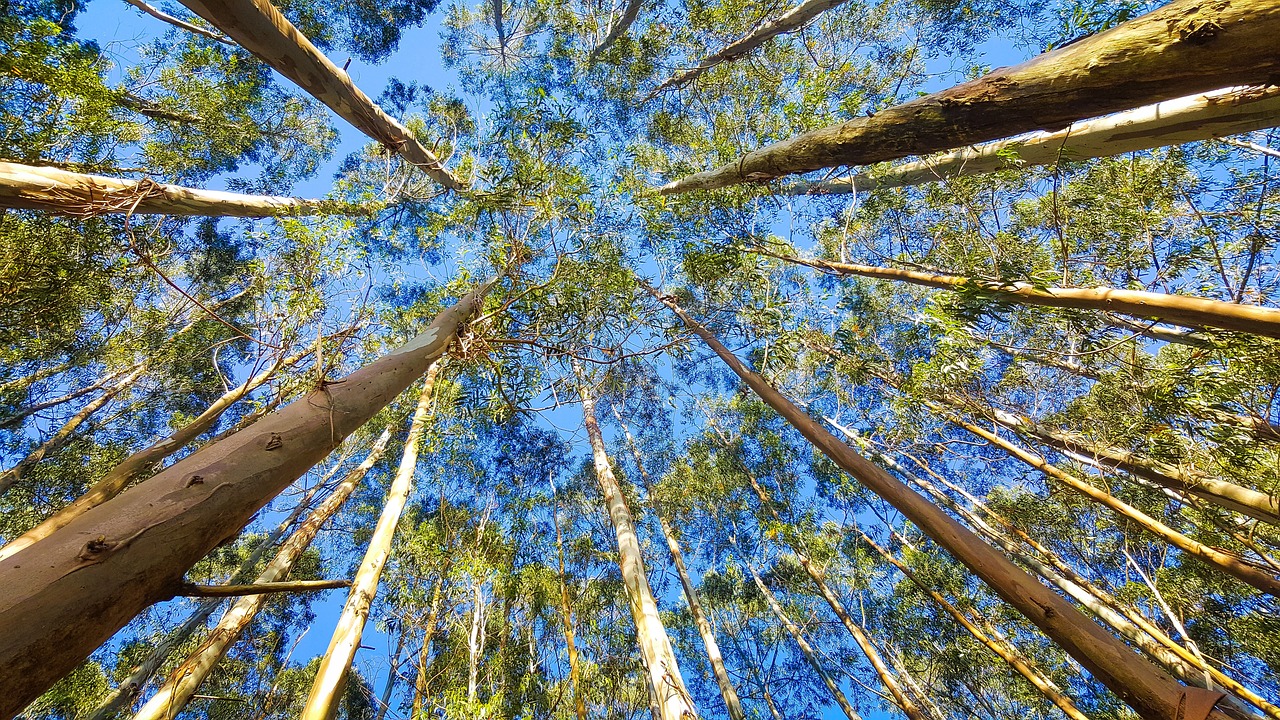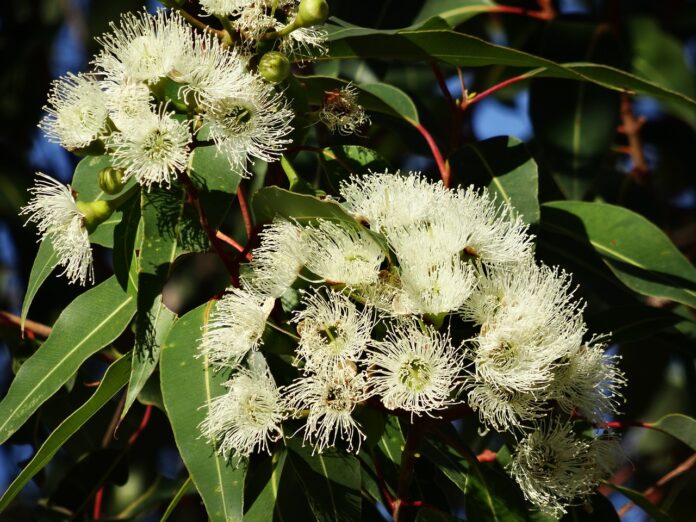Exotic eucalyptus trees are probably known to almost every inhabitant of planet Earth. For many, this tree is associated with cough or cold remedies, or with a fragrant steam bath on the weekends.
Many people think that these giants grow exclusively in Australia or New Zealand, where cute koalas happily munch on their leaves, but some species of eucalyptus have adapted quite well to the warm climates of the Northern Hemisphere. Although they may not reach their maximum size here, they can comfortably adorn groves and parks.
Interestingly, the largest eucalyptus tree is a giant from Tanzania, reaching a height of 101 meters, comparable to an average skyscraper. The tallest, though unverified, eucalyptus tree is said to be over 150 meters.
These plants belong to the myrtle family and can appear as either enormous trees or small shrubs.
The scientific name “eucalyptus,” meaning “well-covered,” comes from the ability of the buds to hide among the sepals.
In Russia, these trees are often called “shameless” because of their tendency to periodically shed their bark, or “gum trees” due to the unique resinous growths on their trunks.
Habitat
There are several hundred species of eucalyptus. Most originate from Australia and Oceania, where these trees make up about 90% of the groves and forests. Some species have successfully adapted to regions like Southern France, Greece, and Portugal, while others thrive in Israel, China, and India. In Russia, eucalyptus trees can be found in Crimea and neighboring warm regions.
For optimal growth, eucalyptus trees require slightly acidic or neutral soil and abundant sunlight, although they can also grow in sandy or loamy soil. Species growing in the mountains have a small amount of frost resistance, but they will die in freezing temperatures.
Description
Throughout its life, the bark of a eucalyptus tree may peel off in small flakes or large sheets, revealing a smooth trunk. The color of the bark can change over time, and on a single tree, it may appear green, gray, or brown. Rainbow eucalyptus trees in Indonesia and the Philippines are particularly colorful, with groves showcasing bright yellow, purple, red, and vivid green hues.
The trunks can be straight or slightly crooked, with many branches. They are often adorned with a resinous gum made from sugars.
The branches create charming canopies shaped like spheres, ovals, or cones. The leaves are elongated, crescent-shaped, with a silvery-green color and rough tips. However, eucalyptus leaves provide little shade from the sun.
Eucalyptus flowers are small and modest, gathered in tiny clusters, and can be white, yellow, orange, or red. The period between budding and fruit maturation can take several years. However, few get the chance to taste the tiny fruits, as it takes about five hundred to make a kilogram.
Unique Features of Eucalyptus
Eucalyptus trees grow quickly. In just three years, a tree can reach a height of ten meters, and later it can rise to the height of a 15-story building.
A striking feature is the thin trunk, with a 30-centimeter-wide base supporting the crown. Only after reaching 15–20 years of age does the tree begin to increase in diameter, while vertical growth slows. Very old eucalyptus trees can have trunks several meters thick.
The tree’s resilience allows it to recover quickly from damage, including fires. In just a few months, eucalyptus trees can sprout new shoots.
Their rapid growth and attractive appearance make eucalyptus a popular choice for landscaping and floral arrangements. Large trees are used for decorating gardens, while smaller bushes are featured in unique bouquets. Eucalyptus can also be grown as a houseplant.
Uses
These giant plants are often used as natural pumps, absorbing water from swampy areas. They also help stabilize slopes and protect soil from erosion.
The healing properties of eucalyptus are well-known in pharmaceuticals, folk medicine, and cosmetics. Its strong scent repels mosquitoes and other insects.
Eucalyptus essential oil is used in medications for treating upper respiratory tract infections, neuralgia, joint diseases, sciatica, and pain relief. It’s also found in creams, shampoos, toothpaste, and lotions.
Infusions of eucalyptus leaves can disinfect wounds and scrapes and provide relief from itching caused by skin rashes.
In saunas, eucalyptus brooms and oils are particularly valued for their pleasant aroma, which lifts the mood and energizes. The heat releases substances that cleanse the mucous membranes and skin, and tone the epidermis.
Eucalyptus wood is also used as an exotic material in construction. Its diverse color range creates unique designs, with hues that can include white, pink, light gray, soft red, dark burgundy, and brown.
Despite its beauty, eucalyptus wood is rarely used in construction. It’s narrow, tricky to dry without cracking or warping, and highly susceptible to shrinkage. However, properly treated eucalyptus boards are exceptionally strong and comparable to oak in density. They resist insect infestations, mold, and fungi, and can be used for furniture, flooring, wall coverings, doors, or windows. However, the high cost limits its widespread use in Russia.
Eucalyptus is more commonly used to produce home decor items, toys, and souvenirs.
In countries where eucalyptus grows as a primary tree, it is used for technical buildings, and the leftover wood is processed into paper or fuel.
